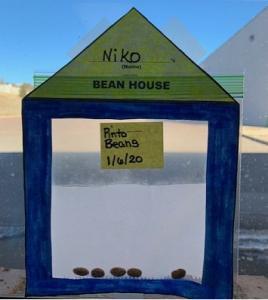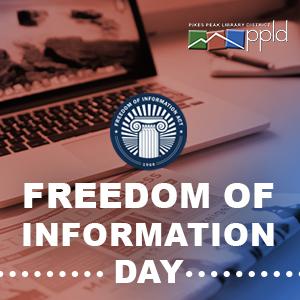Categories
Take and Makes for this homeschool experiment for ages 6-12, will be available at area PPLD libraries starting this Friday, April 2, 2021.
Introduction:
How do seeds transform into plants? What happens when a bean seed begins to grow? Watching a sprout emerge from a dry seed is nothing short of miraculous. You will plant beans inside a plastic bag to watch roots form and leaves emerge right before your very eyes. You will also compare how beans grow in light and dark environments.
Supplies Included in Take and Make Kits:
- 2 plastic zipper storage bags
- 10 uncooked pinto beans (remove from bag)
- 2 paper towels
- Data Sheet for Light Experiment
- Data Sheet for Dark Experiment
- Bean House Template
Supplies from home:
- Water (in bowl or sprayer)
- Scissors
- Scrap paper to label beans with date
- Scotch tape or glue stick
- Pen or Pencil
- Crayons or marker
- Ruler
Safety Tip: Dried beans are chocking hazards for small children. Adults will need to supervise this activity.
For This Experiment:
- Experiment Light: choose a sunny window where the seeds will get plenty of light, but won’t be blasted by intense sun all day.
- Experiment Dark: Find a closed drawer or closet that is dark and not opened very often.
Directions:
- Fold paper towels so they will fit inside the bags.
- Dampen paper towels with spray bottle (not too wet!) and place inside bags. You will need to add water to paper towels when they dry out over time.
- Put 5 beans into each bag on top of paper towels (leave room between them to grow!) and zip closed.
- Write the date on scrap paper, label either Light or Dark, and tape to each bag.
- Color/decorate the frame of the Bean House Template with markers or crayons. Fold it in half lengthwise and use scissors to cut along the dotted lines (you are cutting out a large square). Tape the Light Bean Bag into the Bean House.
- Tape the Bean House (Light Bean Bag) to a window. Put Dark Bean Bag into a dark place.
Now you are ready to prepare your data sheets. Use the Scientific Method questionnaire on the back of each sheet to make predictions about how each bag of seeds will grow. Use the front sides of the sheets to collect data. You will make drawings and take measurements. Do this every 3- 5 days and see if your hypothesis for each bean bag comes true! Do the seeds grow the same in both bags? Can you think of other variables to try besides light and dark?
Take and Makes for this project for ages 5-12, will be available at area PPLD libraries beginning Friday, March 26, 2021.
Watch this project at: https://youtu.be/nNIaTK7sFgA?list=PLMEg2Dd0dSFctLfDQxsL5SmuE8zkwQFmu
Supplies and Directions:
Step 1
- Gather your supplies
- Provided in your bag: a bendy pencil, feathers, and a Mad Lib
- From home: you will need glue (preferably a liquid glue like Elmer's) and a pencil sharpener
Step 2
- Glue your feathers to the erasure side of the pencil
Step 3
- Add a little pressure to the feathers around the pencil. This will help keep them in place.
Step 4
- Wait for the glue to dry
Step 5
- Use your Truffula Tree pencil to create a silly story using the Mad Lib! Try not to read the story until you've filled out all the blank spaces. You might need help from a grownup with this.
Celebrate Freedom of Information Day Tue., March 16!
Now as always in our history, reading is among our greatest freedoms. The freedom to read and write is almost the only means for making generally available ideas or manners of expression that can initially command only a small audience. The written word is the natural medium for the new idea and the untried voice from which come the original contributions to social growth. It is essential to the extended discussion that serious thought requires, and to the accumulation of knowledge and ideas into organized collections. (Read the full ALA's Freedom to Read Statement.)
The Library Bill of Rights
The American Library Association affirms that all libraries are forums for information and ideas, and that the following basic policies should guide their services.
- Books and other library resources should be provided for the interest, information, and enlightenment of all people of the community the library serves. Materials should not be excluded because of the origin, background, or views of those contributing to their creation.
- Libraries should provide materials and information presenting all points of view on current and historical issues. Materials should not be proscribed or removed because of partisan or doctrinal disapproval.
- Libraries should challenge censorship in the fulfillment of their responsibility to provide information and enlightenment.
- Libraries should cooperate with all persons and groups concerned with resisting abridgment of free expression and free access to ideas.
- A person’s right to use a library should not be denied or abridged because of origin, age, background, or views.
- Libraries which make exhibit spaces and meeting rooms available to the public they serve should make such facilities available on an equitable basis, regardless of the beliefs or affiliations of individuals or groups requesting their use.
- All people, regardless of origin, age, background, or views, possess a right to privacy and confidentiality in their library use. Libraries should advocate for, educate about, and protect people’s privacy, safeguarding all library use data, including personally identifiable information.
Learn more about Intellectual Freedom with the American Library Association.
PPLD Policies:
International Resources
- Universal Declaration of Human Rights, Articles 18 and 19
- IFLA Freedom of Access to Information and Freedom of Expression Advisory Committee
- United Nations Sustainable Development Goals, Goal 16 (IFLA was instrumental in the formation of the goal)





